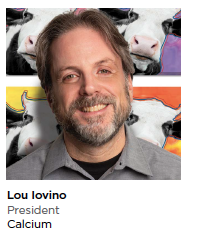 Have you noticed how many “storytellers" there are in our industry today? Just do a search on LinkedIn. There are brand and strategy storytellers. Heads of digital storytelling. Storytellers-in-chief. Seemingly legions of people in the business of storytelling.
Have you noticed how many “storytellers" there are in our industry today? Just do a search on LinkedIn. There are brand and strategy storytellers. Heads of digital storytelling. Storytellers-in-chief. Seemingly legions of people in the business of storytelling.
You could certainly dismiss it as a fad, like open floor plans or ping pong and pool tables in common areas to signify “hipness." But doing so, I believe, ignores an important change that has occurred in recent years — one that not only directly impacts the bottom line, but perhaps an organization’s very viability in this dynamic industry.
The Rise of the Story
Marketing firms succeed or fail, grow into household names or disappear entirely based on their ability to marry brand strategy with amazing creative. This was true during the time of the Mad Men and the emergence of powerhouse television advertising, through the dawn of the Internet and brand.coms, and especially today with the maturation of social media. And, this will certainly remain a hallmark of our business for a long time to come.
But one thing that has changed significantly is our ability to thrive on making stuff. Churning out print, digital, and video content used to be the true lifeblood of marketing agencies. Today, the making of stuff has become so commoditized that it’s nearly impossible to sustain a business with production at the heart of the machine.
The almost ubiquitous offshoring of programming and digital production is emblematic of the new agency economy — and probably the economy writ large.
So, how do marketing agencies evolve? What new product can sustain a business and be essential to all of our clients? Enter storytelling.
Story at the Center
In his book, All Marketers Are Liars, Seth Godin talks about storytelling and its transformative role in marketing. He illustrates his theory by explaining that at the end of the curve on the chart below, the place where you actually tell stories and authentically live up to what you say you’re going to do, is where the leverage is now.
The right side of the curve, where you take something people may or may not need and turn it into something they definitely want, is where the money is.
This is a complete reversal, Godin argues, from the outmoded marketing model where high value was derived from the production of stuff. What’s difficult today, he says, is “figuring out what’s worth making and then telling a story about it."
Inventing new ways of marketing to customers — and the inherent time and effort required to figure out exactly who they are, how to reach them, and what they want to hear — will always require significant investment of time and capital. We certainly shouldn’t stop inventing. It’s an expected cost of doing business and would be anathema to how most of us are wired as marketers. But we can’t bank on it to drive our business either.
Storytelling must be put at the center of our marketing efforts. It is the key element to moving brands in today’s market, and moving customers to engage with our brands. But to be successful, the stories we tell need to do several essential things:
Captivate our audience, whoever they are and wherever they might be
Be generous and convey what’s important about our brands in a big way
Be generative and spawn the creation and sharing of personalized, authentic stories
In short, the stories we tell about our brands need to be special.
This is easy to say, but very hard to do. It requires us to fundamentally shift the way
we market to our customers. But it’s encouraging to see our industry suddenly rife with people united behind the war cry “once upon a time…"(PV)
Editor’s Note:
1 Godin, S. All Marketers Are Liars. Portfolio/Penguin Inc., 2009:37.
Calcium is a healthcare advertising agency that provides brand nourishment.
For more information, visit calciumusa.com.










